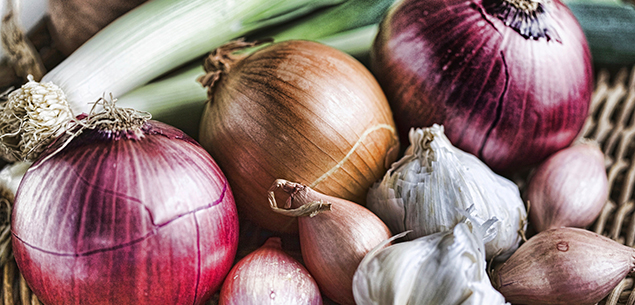A little botanical magic goes a long way in getting us through the winter. Here are five small miracles to try:
1. A tiny evergreen bonsai.
Looks: A miniature tree or forest totally lifts your garden table. The little landscape ones are called Penjing, the Chinese version of the Japanese single tree bonsai.
Needs: Sunlight, watering, snipping. Never think bonsai are low-care; ask about their care before you buy.
2. Potted hyacinths.
Looks: Blues, whites, and pinks, and perfume of paradise.
Needs: A little water to keep the pot moist, and sun until they have bloomed, then they’ll last longer away from direct light.
3. A potted orchid.
Looks: They are so elegant that you and your home will feel sophisticated too.
Needs: Water. Remove to a sunny spot outside and feed at once after blooming to grow blooms for next year.
4. A fern terrarium.
Looks: Luscious green, gets ferns inside your house.
Needs: Incredibly low-care (glass case provides own microclimate), but will need water now and then.
5. A poinsettia.
Looks: These subtropical plants with bright red bracts are best grown inside. They’re traditionally grown for the Northern Hemisphere winter as a symbol of Christmas.
Needs: Best kept in a warm position inside near a window, but can be moved outside in the summer. Always keep the soil moist. The bracts turn red with winter chilling.

Strawberries.
What to plant: Frost-free climates or greenhouses
Plants to eat: Fruit trees and vines, strawberries; all herbs; beans, bok choy, capsicum, celery, chicory, Chinese cabbage, chillies, chokos, cucumbers, eggplant, kumara, melons, parsley, pumpkin, rosellas, salad leaves, shallots, sweetcorn, tomatoes, yacon and zucchini.
Plants for beauty: Ornamental trees, shrubs; gingers, flaxes, strelitzia, dwarf bougainvilleas, yuccas and other perennial beauties; seeds or seedlings of alyssum, calendula, cleome, coleus, gerbera, lunaria, petunias, phlox, salvia, sunflowers, torenia, wallflowers and zinnia.
Cold to temperate climates
Plants to eat: Fruit trees, vines; bushes such as blueberry, currant, raspberry; asparagus crowns, rhubarb, strawberries; Jerusalem artichoke and yacon tubers; seeds of broad beans, onions, parsnips, peas, radish, silverbeet, snow peas, spinach, spring onions, fast-maturing Asian veges such as tatsoi, pak choy and mitsuba, winter lettuce; seedlings of beetroot, broccoli, cabbage, cauliflower, chicory, leeks, lettuce and spinach.
Plants for beauty: Ornamental trees and shrubs; pots of flowering wallflowers or crocus; seedlings of alyssum, calendula, California poppy, evening primrose, gazanias, Iceland poppies, lunaria, pansies, polyanthus, primulas and viola.
Words by: Jackie French
Photographs by: Getty Images

